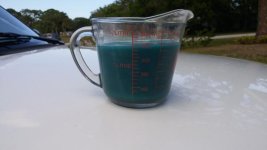snookwhaler
Regular Contributor
So, I finally get this thing running good, get the boat propped right and my first real problem occurred while on a 5 day vacation last week!
While idling the engine is noticeably loud, but it is smooth running. When you put it in gear, the noise goes away and it's super quiet and smooth. Also, I'm getting what sounds like a screeching noise (almost like a belt noise or bearing noise) that starts around 2300RPM and stays until around 3000RPM. It almost sounds like a defective air pump (if it had one).
So, I need to troubleshoot this. Does the pull start mechanism have any components, that ride on top of the flywheel or come in constant contact with the crankshaft? I figure I can remove that whole assembly and see if the noise goes away. Also, I notice there is an idler or tensioner pulley for the timing belt. Is there a way to remove the timing belt easily to check this pulley and put it back to rule out the bearing in the pulley being bad? Assuming there are timing marks somewhere around the crank and cam?
Finally, is it possible to run the engine with the lower unit removed to rule out a bearing problem in the lower unit transmitting noises up to the powerhead? I do have the upper flush attachment that connects to the powerhead.
FWIW. The engine runs excellent otherwise and it did not affect our trip at all. We used the boat every day, 1 to 3 hours per day.
While idling the engine is noticeably loud, but it is smooth running. When you put it in gear, the noise goes away and it's super quiet and smooth. Also, I'm getting what sounds like a screeching noise (almost like a belt noise or bearing noise) that starts around 2300RPM and stays until around 3000RPM. It almost sounds like a defective air pump (if it had one).
So, I need to troubleshoot this. Does the pull start mechanism have any components, that ride on top of the flywheel or come in constant contact with the crankshaft? I figure I can remove that whole assembly and see if the noise goes away. Also, I notice there is an idler or tensioner pulley for the timing belt. Is there a way to remove the timing belt easily to check this pulley and put it back to rule out the bearing in the pulley being bad? Assuming there are timing marks somewhere around the crank and cam?
Finally, is it possible to run the engine with the lower unit removed to rule out a bearing problem in the lower unit transmitting noises up to the powerhead? I do have the upper flush attachment that connects to the powerhead.
FWIW. The engine runs excellent otherwise and it did not affect our trip at all. We used the boat every day, 1 to 3 hours per day.


